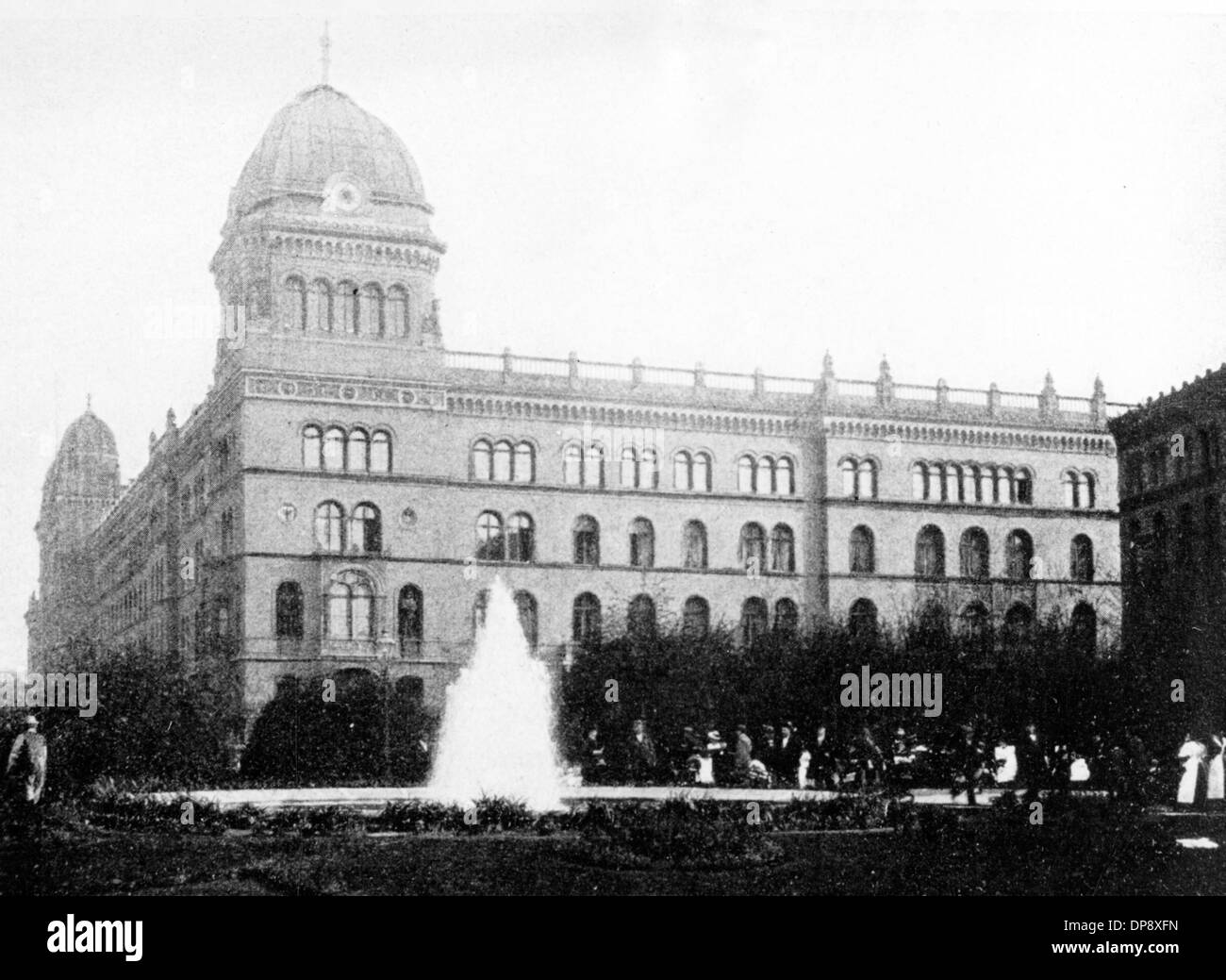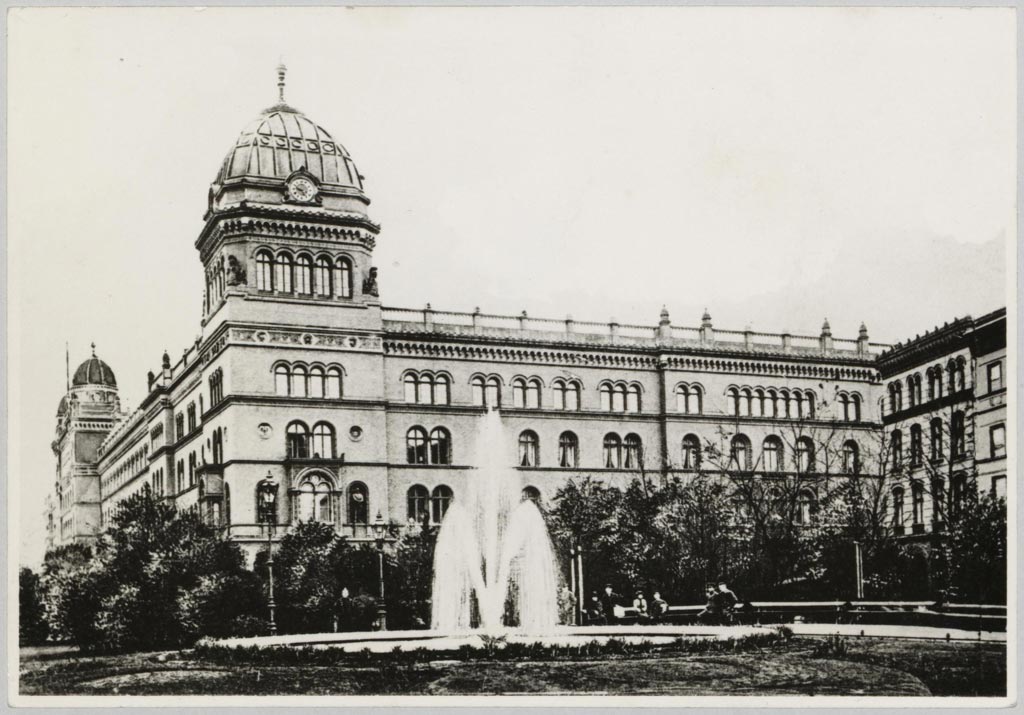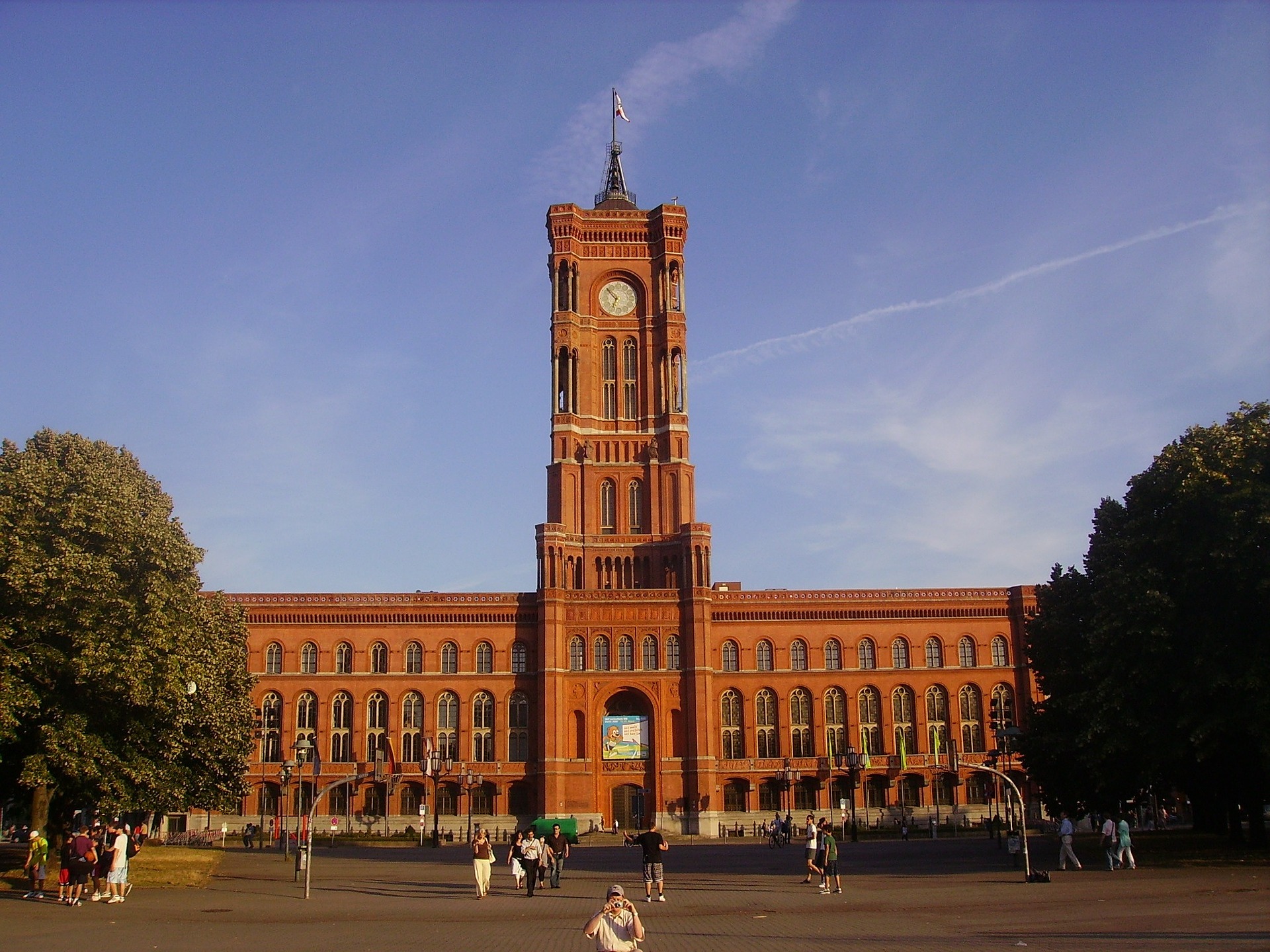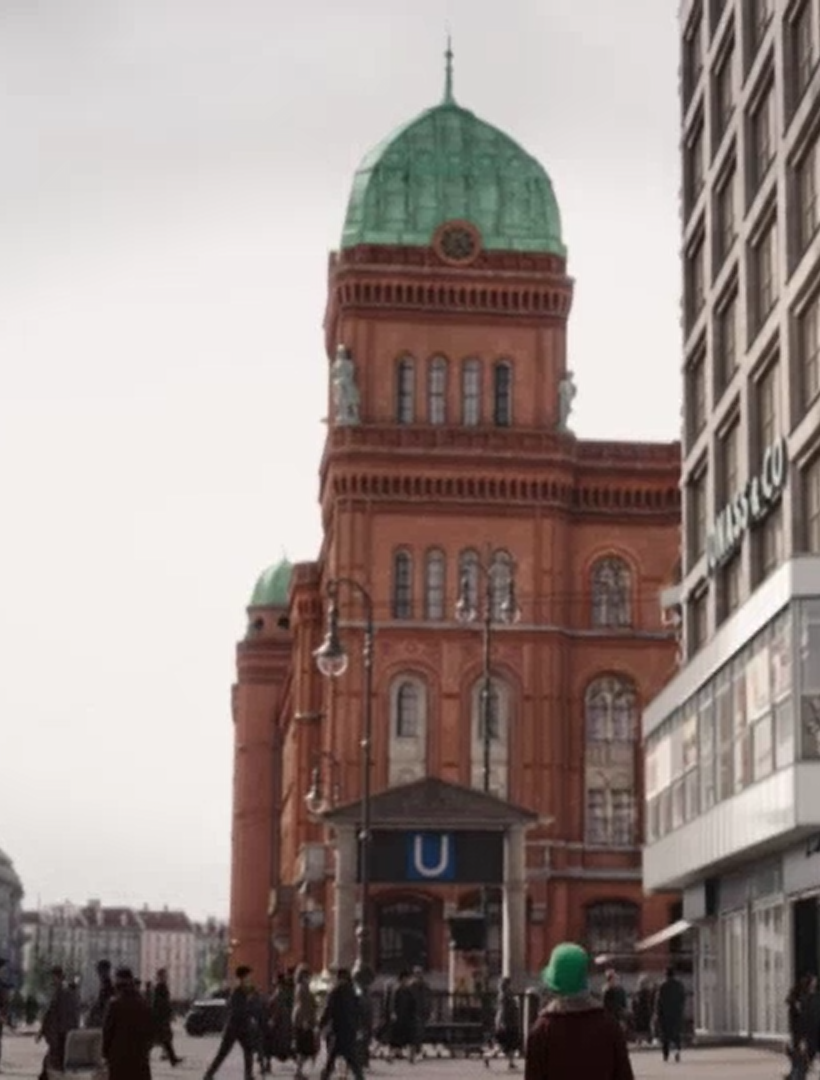
Berlin ca.1912 Alexanderplatz Berlin, Berlin city, Berlin germany
Die Rote Burg am Alex. Zwischen 1890 und 1945 befand sich das Berliner Polizeipräsidium unmittelbar neben dem Alexanderplatz. Das Gebäude war riesig: Es begann am späteren Alexanderhaus und zog sich an der Bahntrasse entlang über das Grundstück des heutigen Einkaufcenters Alexa Richtung Jannowitzbrücke. 196 Meter lang zwischen Alexander.

Rote Burg Babylon Berlin Wiki Fandom
The interior shots were filmed for the police department in which Gereon Rath works in the Red Town Hall. The original police department building on Alexanderplatz, called the Rote Burg, was built at the end of the 19th century and was the largest building in the city, next to the Berlin Palace. The building suffered serious damage in the second world war.

1930ca Berlin, Alexanderplatz mit Blick zum Polizeipräsidium, Rote Burg,
Polizeipräsidium Alexanderplatz steht für: . Polizeipräsidium Alexanderplatz (1890-1945) (Rote Burg), Polizeipräsidium an der Alexander-/Dircksenstraße, Berlin Polizeipräsidium Alexanderplatz (1951-1990), Polizeipräsidium in der Keibelstraße, Berlin Diese Seite wurde zuletzt am 16. Oktober 2022 um 15:23 Uhr bearbeitet.

Police headquarters in Berlin called "Red Castle" due to its outer Stock Photo 65349977 Alamy
Die Rote Burg - ein buddhistisches Retreatzentrum. Inmitten eines Naturparks mit Wiesen und Seen, nur 60 km nördlich von Berlin, liegt die sogenannte „Rote Burg": zwei alte Zieglergebäude mit ca. 850 qm Nutzfläche und umgeben von 37.000 qm Wiesen und Eichenwald. Im Juli 2020 haben wir, die Buddhistische Gemeinschaft Triratna Berlin e.V.

The SBahn Murderer A Serial Killer In Nazi Berlin Berlin Experiences
In the middle of a nature park surrounded by meadows and lakes, only 60 kilometres north of Berlin, lies the so-called "Rote Burg" (Red Castle): two old Ziegler buildings with about 850 square metres of floor space and surrounded by 37,000 square metres of meadows and oak forest. In July 2020, Aryabandhu, Chairman of the Berlin Buddhist Centre, signed the purchase contract for the Rote Burg.

Rote Burg Babylon Berlin Wiki Fandom
Inmitten eines Naturparks mit Wiesen und Seen, nur 60 km nördlich von Berlin, liegt die sogenannte „Rote Burg": zwei alte Zieglergebäude mit ca. 850 qm Nutzf.

1945 Berlin, Alexanderplatz, Landsbergerstr. Ecke Neue Königstr., Rote Burg, AlexanderHaus
The Rote Burg - a Buddhist retreat centre. In the middle of a nature park surrounded by meadows and lakes, only 60 km north of Berlin, lies the so-called "Rote Burg" ("red castle"): two old Ziegler buildings with about 850 sqm of floor space and surrounded by 37,000 sqm of meadows and oak forest. In July 2020, the Buddhist Community Triratna.

Berlin Alexanderplatz Voyage au bout de la ville Vivre à Berlin
Wegen seiner Außenfront aus hellrotem Stein wird das Polizeipräsidium von den Berlinern schon bald als "Rote Burg" bezeichnet. Ein anderer Spitzname leitet sich aus seinem monumentalen Äußeren ab: die "Zwingburg am Alex" ist damals das drittgrößte Gebäude von Berlin. Übertroffen wird sie lediglich vom Stadtschloß und vom Reichstag.

Stechbahn 1880 Die sogenannte Rote Burg oder Rotes Schloß (wegen der roten Verklinkerung) war
One structure demolished after World War II was the 'Rote Burg', a red brick building with round arches, previously used as police and Gestapo headquarters. The huge construction project began in 1886 and was completed in 1890; it was one of Berlin's largest buildings. The 'castle' suffered extensive damage during 1944-45 and was demolished in.

Rote Burg Babylon Berlin Wiki Fandom
Das Polizeipräsidium am Alexanderplatz war als Rote Burg bekannt. Es stand seit dem ausgehenden 19. Jahrhundert dort, wo sich heute das Alexa befindet. Damals war es das zweitgrößte Gebäude Berlins und die roten Backsteine verhalfen dem Bau zu seinem Spitznamen. Die Geschichte des Polizeipräsidiums umfasst berühmte Mordkommissare.

ФОТО WIKIMEDIA COMMONS ROTE BURG Путешествия, Направления
With the political unrest spurred by May Day demonstrations and rising National Socialism, even an institution like the "Rote Burg," Berlin's police headquarters and the centre of democracy and the constitutional state, is increasingly becoming the melting pot of a democracy whose days are numbered.

Berlin, Alexanderplatz, Polizeipräsidium, Rote Burg, um 1931. Berlin geschichte, Historische
Because of its red brick and its chunky towers, the building at the corner of Alexanderstrasse and Dircksenstrasse was known as the Red Castle (die Rote Burg). And indeed, regarding its size, it was second only to the royal palace. It was built between 1886 and 1889 and destroyed during the war.

Michael Bienert, „Döblins Berlin“ Am Alexanderplatz war schon 1929 der Teufel los WELT
The Alexanderplatz Berlin Police Headquarters (also known as the Rote Burg) - home of the Serious Crimes Unit of Berlin's Criminal Police/Image: Public Domain. A Serial Killer in Nazi Berlin: The Chilling True Story of the S-Bahn Murderer. Berkley Books, 2014, ISBN 978--425-26414-.

Berlin_rotesrathaus906651_1920_WikimediaImages_Pixabay Hausverwaltung R.E. Immo GmbH
The Rote Burg - A new retreat centre for the Berlin Sangha and beyond By Sadayasihi on Tue, 9 Feb, 2021 - 09:58. In the middle of a nature park surrounded by meadows and lakes, only 60 kilometres north of Berlin, lies the so-called "Rote Burg" (Red Castle): two old Ziegler buildings with about 850 square metres of floor space and surrounded by 37,000 square metres of meadows and oak forest.

Rote Burg Babylon Berlin Wiki FANDOM powered by Wikia
An ihrer Stelle errichtet die Stadt Berlin zwischen 1886 und 1889 ein zentrales Polizeidienstgebäude von erstaunlichen Ausmaßen: Fast 200 Meter misst die Front an der Alexanderstraße. Die "Rote Burg" ist bei ihrer Einweihung nach dem Schloss das zweitgrößte Gebäude der Stadt. Es gibt neun Höfe und eine Reitbahn für die berittene Polizei.

An der Stechbahn
In dem „Rote Burg" genannten Komplex zwischen Alexanderstraße und Dircksenstraße saß der Polizeipräsident von Berlin, hier befanden sich sämtliche kommunalen Polizeistrukturen, zudem die.